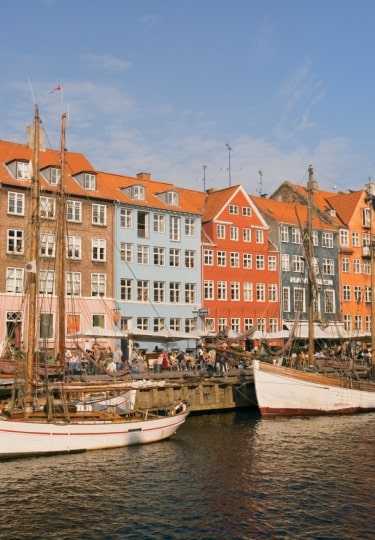The best time to visit Copenhagen, the Danish capital, is in the spring and summer. The days are long, the weather is generally fine, and outdoor living is in full swing, with locals enjoying the city’s parks, pubs, and outdoor dining.
Copenhagen has a Baltic climate, which means cold winters and mild summers. It’s rarely overwhelmingly hot, and while snow does fall in winter, long periods of bitter cold are unusual. Life for Danes is defined more by daylight hours than temperature, with locals hunkering down in the dark days of January and embracing the long daylight hours of June and July.
Visiting Copenhagen By Season
Summer
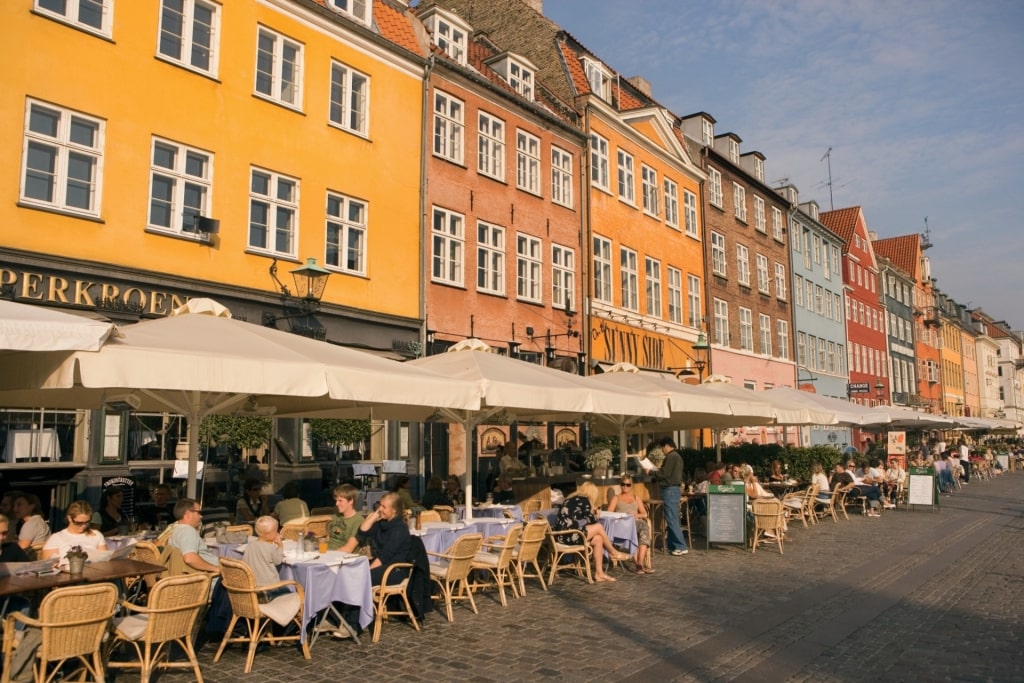
Nyhavn
June, July, and August are when the days are longest; in June, Copenhagen receives 17.5 hours of daylight. July is the warmest month of the year, with average temperatures of 64.4°F (18°C), although there are occasional heatwaves.
Summer is a time of festivals, outdoor dining, cycling around the city, and for the hardy, swimming in the chilly Baltic Sea.
Rainfall is fairly evenly spread throughout the year in Copenhagen, although August can be a little wetter than the other summer months, with an average of 3.1 inches (80mm) of rain falling over 10 days.
This is normally in the form of short showers, though. If it does rain, there’s no shortage of royal palaces, galleries, and museums in Copenhagen to explore.
Fall
September, October, and November bring the change of season to Copenhagen. September is still relatively warm, with average temperatures of 57.8°F (14.4°C) and an average of five hours of sunshine, but this has dropped to two by November.
October brings fall colors to the city, with trees in the many parks and gardens sporting a beautiful array of gold and red. At the end of the month, Tivoli Gardens is especially atmospheric as Hallowe’en is celebrated.
Winter
Copenhagen experiences cold, dark winters, when the concept of hygge that Denmark is known for comes into its own. Cozy cafés, log fires, warm woolen knits, and hot toddies, or glögg, are all embodiments of hygge.
As Christmas approaches, the city comes to life with colorful advent markets. There’s often snow on the ground in December, adding a sense of romance. The weather, though, is cold.
The average temperature in January and February hovers just above freezing, rising to 38.1°F (3.4°C) by March. Days are short, with less than eight hours of daylight in January and February.
Spring
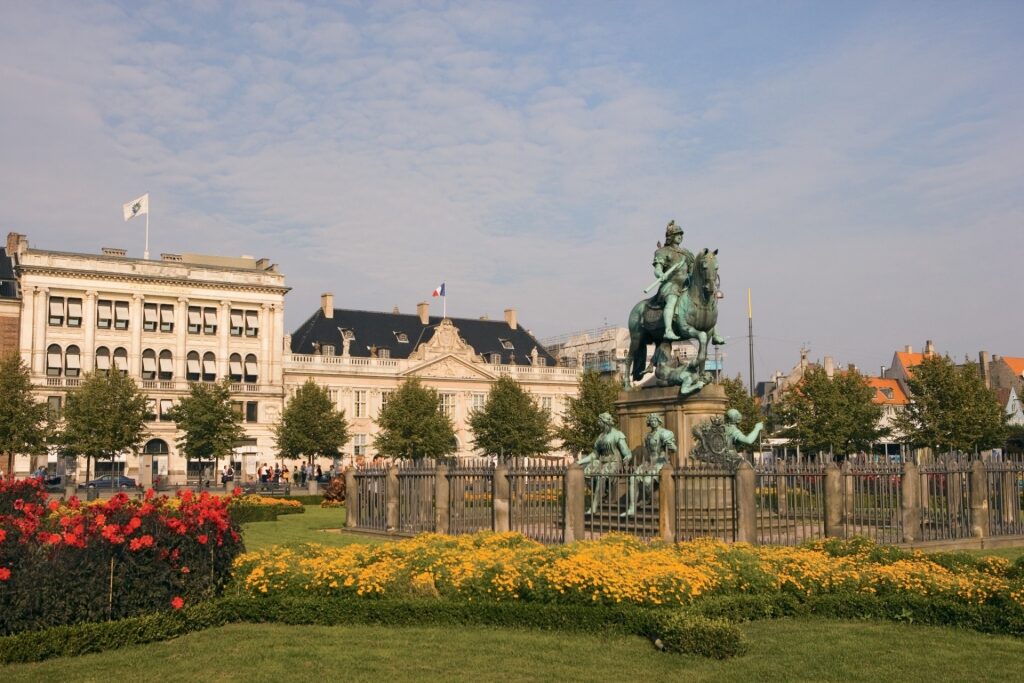
King’s New Square
Late spring is a wonderful time to visit Copenhagen, as the summer solstice approaches and the city’s parks are full of flowers. April is the driest month of the year, receiving just 1.4 inches (35mm) of precipitation. By May, temperatures are averaging 53.5°F (12°C) with an average of 8.5 hours of sunshine.
Spring is when the city really starts coming back to life after the long, dark winter. The parks are bright with pink cherry blossom and tulips, while restaurants begin to open their outdoor terraces.
When Is Rainy Season?
Rainfall is fairly evenly spread throughout the year in Copenhagen. March and April receive the least precipitation and curiously, August receives the most. Despite this, summer is one of the best times to visit Copenhagen thanks to the long daylight hours and warmer temperatures.
In winter, from November to February, precipitation may fall as snow. The weather is cold enough to sustain outdoor skating rinks in December, January, and February.
When Is High Season?
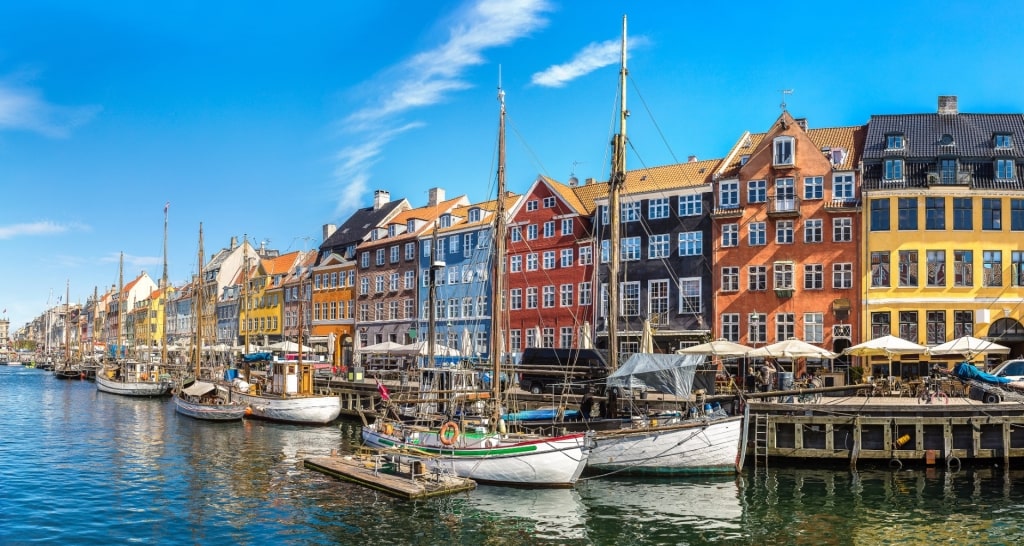
Nyhavn
High season in Copenhagen is the summer months, from June to August, when the days are long. In June, the sky is light until 10 pm. Locals are out soaking up the warm weather and enjoying al-fresco drinking and dining. This is the best time to go to Copenhagen to see Danes really enjoying their city.
Summer is also a time of outdoor festivals; in July, the Copenhagen Jazz Festival is a big event, while August brings the Opera Festival, Fashion Week, and Pride.
When Is Shoulder Season?
Shoulder season in Copenhagen is spring and fall, particularly the months of April, May, and September, which can see fine days and plenty of sunshine.
Danes are not deterred by showery weather; there’s so many things to do in Copenhagen, in terms of museums, galleries, stylish shops, and the cutting-edge culinary scene, that enjoyment is not weather-dependent.
When Is Low Season?
Low season in the Danish capital is the colder, darker months, including November, January, and February. This is a time for staying indoors and enjoying the warmth. A lot of Danes take winter vacations to sunnier corners of Europe to escape the darkness of the winter months.
Read: One Day in Copenhagen
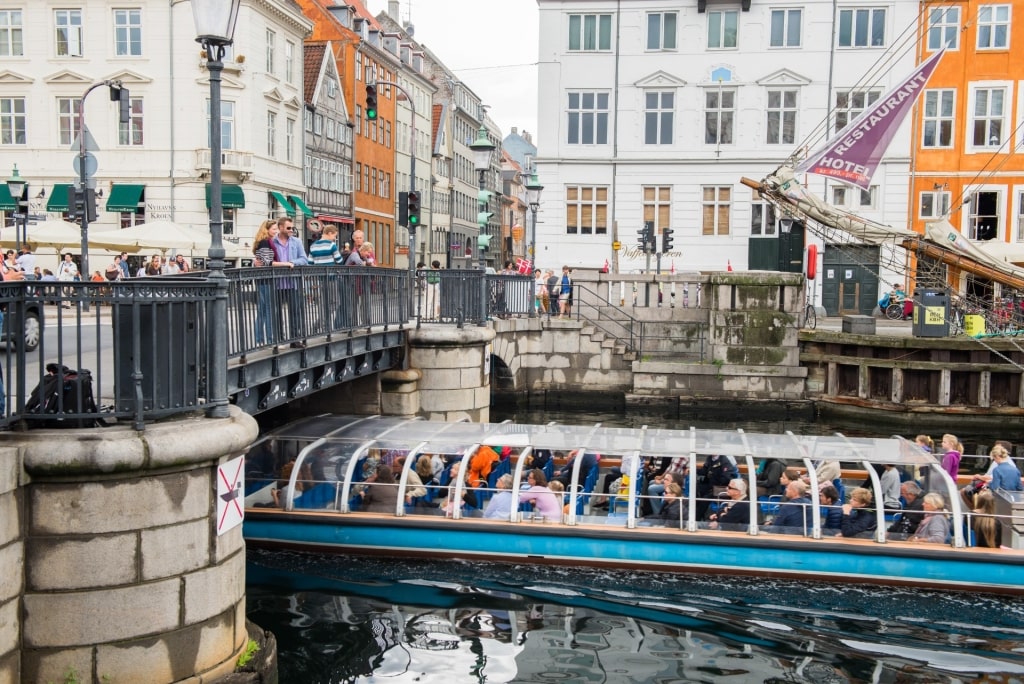
Nyhavn
Are you ready to embrace the culture of Denmark’s vibrant capital? Browse our cruises to Copenhagen and plan your European adventure.
